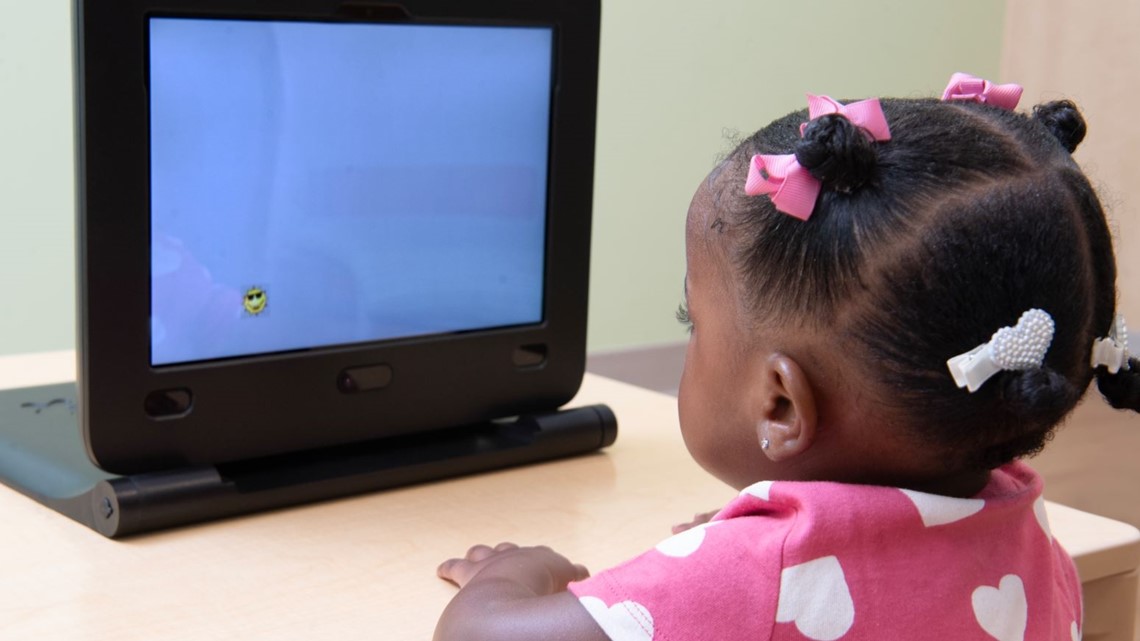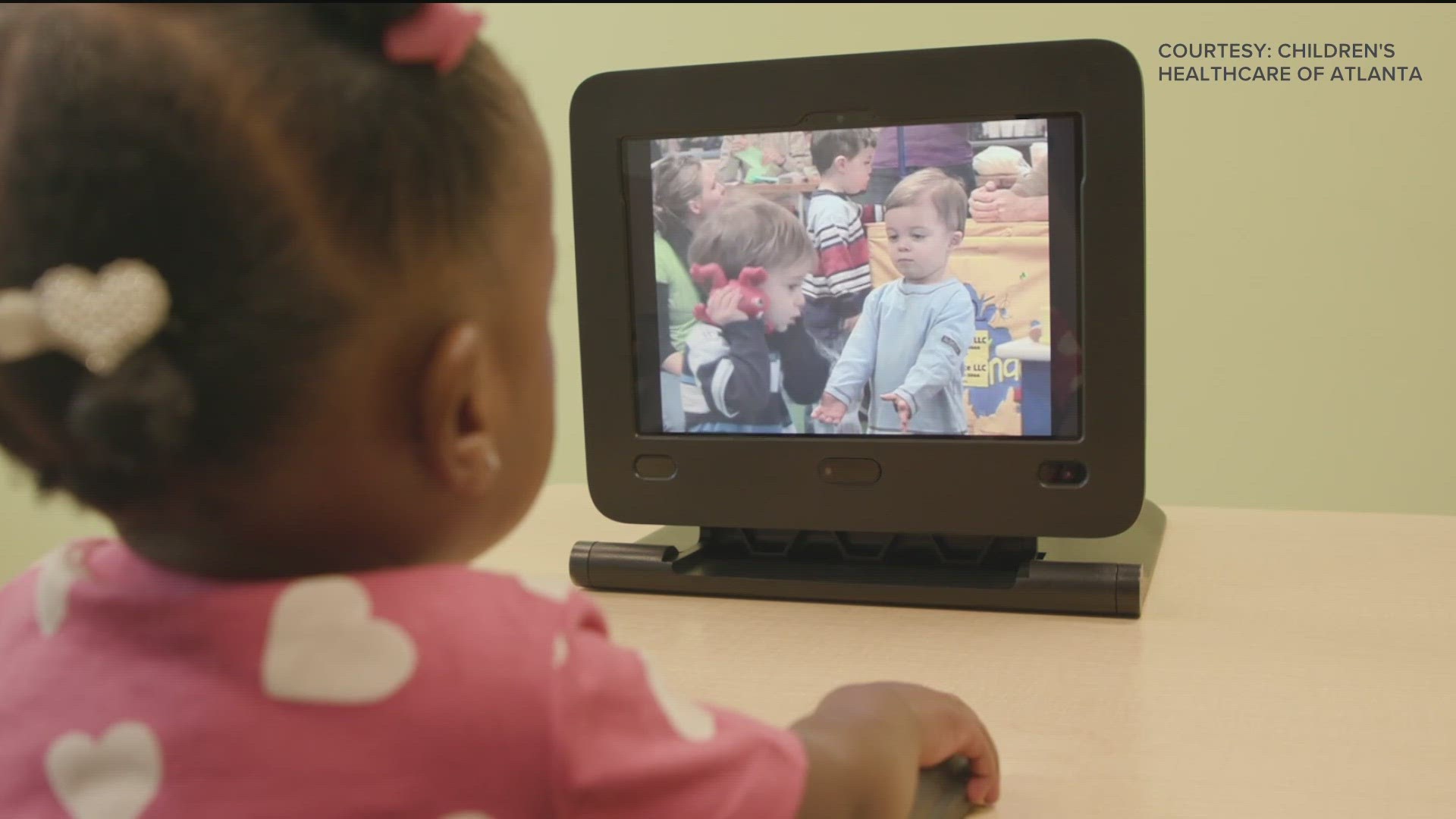ATLANTA — The Marcus Autism Center with Children's Healthcare of Atlanta says two of its doctors have developed the "first biomarker-based, eye-tracking diagnostic technology" for autism and it began to be put into use in early August.
The tool was developed by Drs. Ami Klin and Warren Jones, according to the center. Two articles published in The Journal of The American Medical Association (JAMA) and JAMA Network Open on Tuesday, a release added, "validate its use in the early diagnosis of autism.."
Called the EarliPoint Evaluation, it has been authorized for use with children between the ages of 16 and 30 months to "aid in the diagnosis and assessment of autism."
According to the center, the tool "measures children’s looking behavior to provide clinicians with objective measurements of each child’s strengths and vulnerabilities."
It is described further:
To use the device, children watch video scenes of social interaction on a portable tablet. As they watch, their looking behavior is monitored moment-by-moment to determine what social information the children look at and what they do not. Reviewing the data, which includes a personalized and detailed report with visualizations from the test, clinicians use the tool to provide the family with a timely and objective diagnosis, together with measures of the levels of each child’s social disability, verbal ability, and non-verbal learning skills. These results help clinicians to then work with the family on an individualized treatment plan.
The tool was first used at the Marcus Autism Center on Aug. 7, according to the release.


“The far-reaching implications of these results may mean that children who currently have limited access to expert care, and face two or more years of waiting and referrals before finally being diagnosed at age four or five, may now be eligible for diagnosis between the ages of 16 and 30 months,” Dr. Klin, PhD, Director of the Marcus Autism Center at Children’s Healthcare of Atlanta, said of the published research findings. “In addition, this technology measures each child’s individual levels of social disability, verbal ability and non-verbal learning ability, which is critical information for clinicians when developing personalized treatment plans to help each child make the greatest gains.”
Dr. Jones added the research results "show that the way in which young children look at social information can serve as an effective and objective biomarker for early signs of autism."
“This technology is a first-of-its-kind, biomarker-based tool developed and clinically validated to aid in the diagnosis of autism,” Dr. Klin said of the EarliPoint Evaluation tool itself. “The published studies show that objective, performance-based biomarkers of children’s looking behavior can help clinicians by reducing the time required for accurate autism diagnosis from multiple hours of clinician assessment to as little as 12 minutes of objective measurements. The tool collects data at 120 times per second and, within 12 minutes of video watching, we can compare moment-by-moment looking behavior of a child and measure thousands of divergencies to compare to typically developing peers.”

